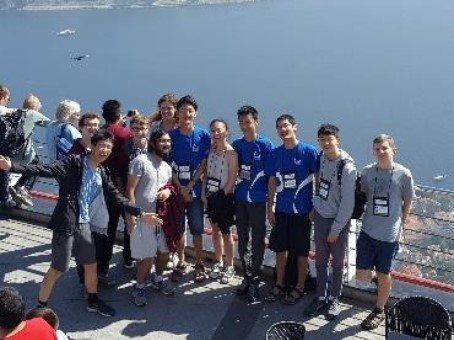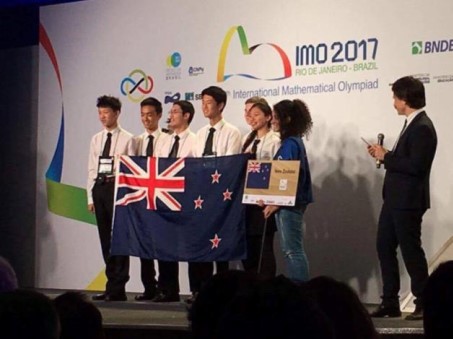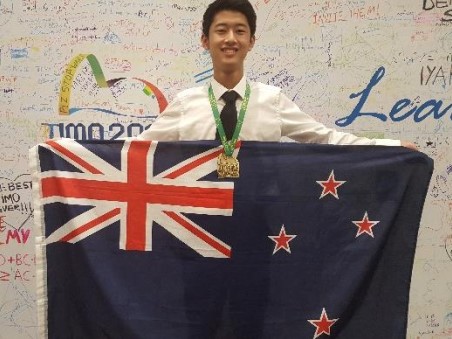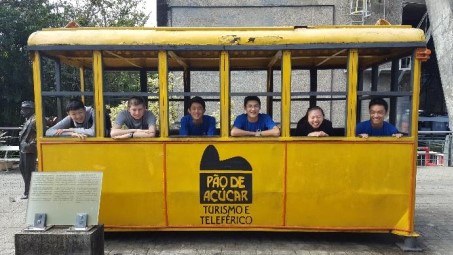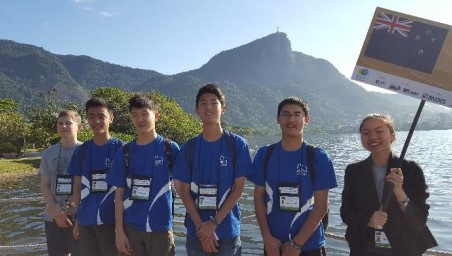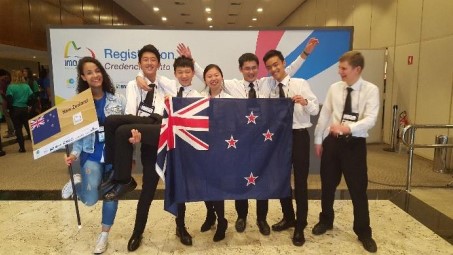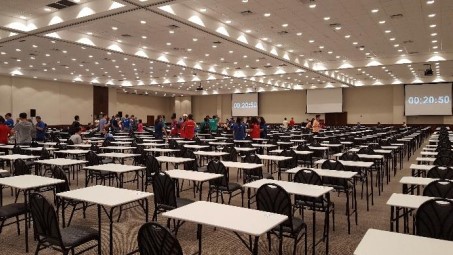Andrew Chen: IMO 2017 Rio de Janeiro Report
About IMO 2017
The International Mathematics Olympiad, widely regarded as the most prestigious mathematics competition worldwide for pre-university students, was held in Rio de Janeiro this year from the 12th to the 23rd of July, 2017. Participating countries were allowed to send up to six contestants, who would have undergone an intensive training and selection process.
The contest itself consists of six questions spread over two days. On each day, the contestants are given four and a half hours to work independently on three questions. Each question is marked out of 7, so total scores out of 42. Gold, silver and bronze medals are awarded, as well as honourable mentions. I scored 7, 0, 0, 7, 2, 0, a total of 16, gaining a bronze medal. New Zealand placed 46th of 111 participating countries, its third best result in percentage terms, out of its 30 or so participations. Of particular note is that this was the first year that every New Zealand contestant got a perfect score on questions 1 and 4.
Location and Excursions
Rio de Janeiro was an extraordinary city to visit – with over 6 million people, urban forests, and famous beaches stretching for kilometres. Although it was winter, it was still very warm, with temperatures in the mid-high 20s. We first stayed at the Sheraton Barra for two nights, before moving to the official accommodation at the Windsor Oceanico Hotel, both of which were located in Barra da Tijuca, a well-off, ‘touristy’ part of Rio. The hotel was opposite a beach, which we visited numerous times.
This year, the opening ceremony, contest, meals, and closing ceremony all took place within the hotel. However, this did not stop us from exploring the city with our amazing guide, Leticia Carvalho, and on the official excursions. We visited the iconic Sugarloaf Mountain (Pão de Açúcar) which the IMO 2017 logo was inspired by, the Maracanã football stadium, a lagoon, a local mall, and the Christ the Redeemer statue. I felt that spending time touring the area most enjoyable, and a good way to relax following the competition.
The Competition
On Day 1, the first question way number theory; the second was a functional equation; the third combinatorial geometry. To be perfectly honest, I don’t think I was thinking clearly on the first day. Despite question 1 turning out to be one of the easiest IMO questions of the last 20 years, it still took me an hour to solve, due to some arithmetic errors. It also took quite a while to write up, and after the contest it was found that I had made some errors. Nonetheless, thanks to the negotiating ability of our team leader, I still (just!) got the full 7 marks. I didn’t get anywhere on question 2, making quite a few algebraic errors.
Unsurprisingly, I got 0 marks. As for question 3, it turned out to be a very nice question, I just didn’t try it in the competition. Overall, day 1 was a bit disappointing.
Day 2 was better. I managed to solve (and write up) question 4, which was geometry, fairly quickly, giving me 3.5 hours to work on problem 5, which was combinatorics. Unfortunately, it turned out to be one of the most difficult IMO question 5s, and I didn’t solve it. However, I made partial progress, earning 2 marks, resulting in a score of 16, right on the bronze cut-off.
STEM
A good aspect of this year’s IMO was that it furthered our understanding of science, technology, engineering and mathematics. This was done in a number of ways, ranging from an IMPA (The Brazillian Institute of Pure and Applied Mathematics) member telling us that “You all love solving math problems. At IMPA, people will pay you to solve math problems,” to promotional material from some of the worlds’ top universities for STEM, to Artur Avila, ex- IMO gold medallist and Fields Medallist, speaking about others who had attended the IMO and had gone on to do mathematical research.
In this way, attending the IMO has helped me better understand the full range of career paths in STEM, particularly those which require great mathematical skill. By doing this, and also affirming my mathematical ability, attending the IMO has made me more likely to seek a STEM-related career. It has made me now feel that science and technology is a thriving area worth pursuing a career in.
Reflection
Although this is the second IMO I have attended, I must say that the experience was every bit as incredible as the first. For students, interacting with like-minded students from all over the world in itself is something extraordinary. In doing so, one learns that people around the world aren’t all that different. For some, in dealing with disappointment, we learn much about ourselves, growing in resilience, and as people. Lastly, for all students, participating in an event as impressive as the IMO opens up so many opportunities, whether they may be for tertiary study, or careers.
In reality, flying halfway across the world to the remarkable event that the IMO is requires funding to be possible. As such, we are gracious for the generosity of our sponsors, particularly the Royal Society of New Zealand. We hope for your continued support so more New Zealand students can have the highly rewarding opportunity to attend the International Mathematics Olympiad.
Personally, provided I am again selected, I may attend one more IMO – Romania 2018. I know I can, and I am determined to make it my best.
Photos

